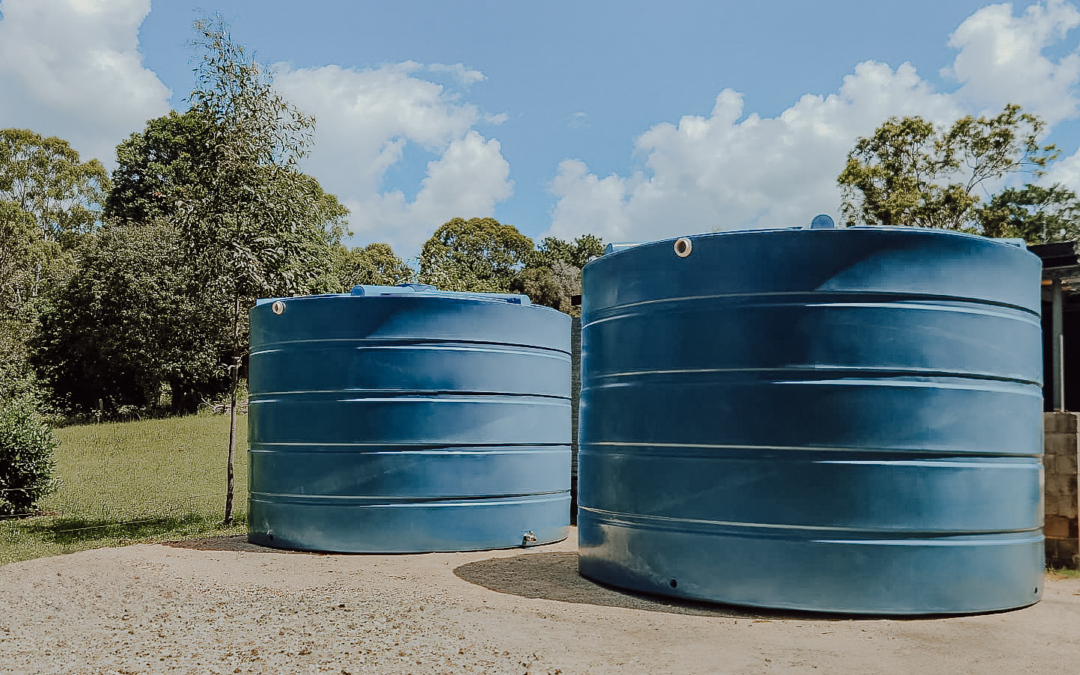Water is life, and in rural Australia, where access to a consistent and reliable water supply can be a challenge, rainwater harvesting is more than just sustainable effort, its necessity. With vast stretches of farmland, unpredictable weather patterns, and increasing pressure on traditional water sources, rural communities and farmers must find ways to secure their own water supply. Rainwater harvesting has become an indispensable solution, offering both economic and environmental benefits while against drought and water shortages.
The Reality of Water Scarcity in Rural Australia
Australia is no stranger to extreme weather. Many rural regions face long dry spells, with some areas experiencing weather. Many rural regions face long dry spells, with some areas experiencing drought conditions that last for years. The resilience on bore water, dams and rivers is becoming increasingly risky, as groundwater levels drops, and rainwater becomes more periodic. Government water restrictions and the rising cost of purchasing water further compound the issue, making self-sufficiency a top priority for farmers and rural households.
Rainwater harvesting provides a practical solution by allowing rural Australians to collect and store water during rainy periods, ensuring they have a backup supply when dry conditions hit. A well-designed rainwater storage system helps communities and farmers reduce dependence on external water sources and provides security in time of uncertainty.
Why Every Rural Property Needs a Rainwater Storage System
For rural properties, access to a consistent water supply is essential for daily operations. Farmers need water for irrigation, livestock, and domestic use, while rural households depend on it for drinking, cooling and washing. Rainwater harvesting is an effective way to supplement or even replace unreliable sources.
Modern poly rainwater tanks, such as provided by Enmach, offer a durable and long-lasting storage solutions that can withstand Australia’s harsh condition. UV resistant and corrosion free, these tanks provide an excellent alternative to older steel or concrete tanks, which are prone to rust and degradation over time. By investing in a high-quality rainwater storage system, rural properties can ensure they always have access to clean safe water, even when traditional sources run low.
Economic and Environmental Benefits of Rainwater Harvesting
Beyond ensuring water availability, rainwater harvesting offers significant cost savings. For farmers who rely on trucked in water or expensive bore drilling, the ability to capture and store rainwater eliminates recurring expenses. Over time, the investment in a rainwater tank pays for itself by reducing water bills and minimising the need for external water sources.
Environmentally, rainwater harvesting helps reduce the strain on natural water bodies, such as rivers and underground aquifers, which are being depleted at an alarming rate. By capturing rainwater that would otherwise run off and be wasted, rural communities contributed to sustainable water management practices that benefits both their livelihoods and the broader ecosystem.
The Role of Rainwater Harvesting in Climate Resilience
As climate change continues to impact weather patterns, water security in rural Australia will only become more critical. Rainfall is becoming more inconsistent, making it essential for farmers and rural residents to plan. A well-maintained rainwater harvesting system provides peace of mind, ensuring that even during prolonged dry spells, there is still access to a reliable water source.
Poly rainwater tanks offer the durability needed to withstand the tough Australian climate. They are impact-resistant, non-corrosive, and designed to handle extreme temperature, making them an ideal choice for rural properties looking to secure their water future.
Investing in the Future of Rural Australia
For those living and working in rural Australia, rainwater harvesting is not just an option, it’s necessity. Having a secure, self sufficient water supply can make the difference between thriving and struggling during dry seasons. Whether for irrigation, livestock, or household use, installing a rainwater storage system is an investment in long-term sustainability.
With the right system in place, rural communities can take control of their water supply, reduce costs, and contribute to a more sustainable future. In a country where water is one of the most precious resources, rainwater harvesting is an indispensable tool for survival and success in rural Australia.
Follow us on Facebook and LinkedIn for the latest news and updates of products.

